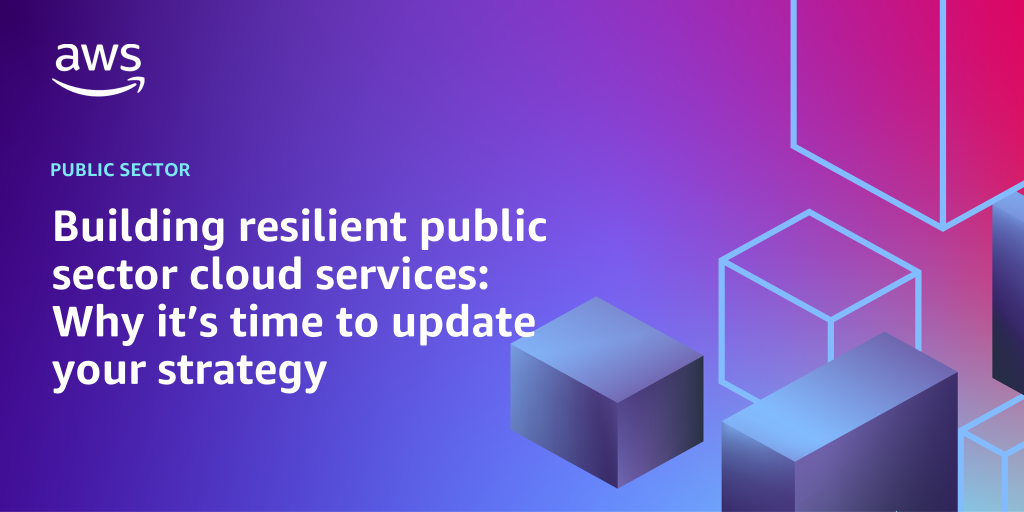AWS Public Sector Blog
Tag: resiliency
Building resilient public sector cloud services: Why it’s time to update your strategy
Our public sector customers rely on the resilience of the Amazon Web Services (AWS) Cloud so they can deliver on their critical missions. In the face of growing risks of cyberattacks and environmental threats, like floods or earthquakes, and physical risks, like equipment failures, public sector leaders have an increasingly complex job to do. And yet, citizens expect government services like elections or passport renewal to work as efficiently and reliably as the online commercial platforms they use.
NATO’s march to multi-domain operations: Transforming the alliance with hyperscale cloud
Across NATO’s 32 member states, today’s rapidly evolving threat landscape requires continuous modernization of advanced technology solutions, underscoring the strategic importance of the alliance’s digital transformation. This modernization effort demands speed, scale, security, and global innovation capabilities to stay ahead. Collaborating with technology leaders like Amazon Web Services (AWS) can accelerate innovation and NATO’s ability to deliver mission-ready solutions to counter known and emerging threats.
Securing the future of healthcare in the age of generative AI and connected care
The healthcare industry is undergoing a profound transformation, driven by the adoption of generative artificial intelligence (AI), cloud computing, and connected care devices. This digital revolution promises to improve patient outcomes, reduce costs, and enhance the overall healthcare experience. However, it also introduces new challenges in terms of cybersecurity, privacy, and regulatory compliance. To navigate this complex landscape, healthcare organizations are turning to scalable, affordable, and highly available cloud infrastructures such as Amazon Web Services (AWS) to build resilient, secure, and innovative solutions.
AWS announces Satellite Resiliency for AWS Outposts
Satellite Resiliency for AWS Outposts offers a comprehensive, Partner-managed solution for resilient cloud-connected edge computing that extends the reach of Amazon Web Services (AWS) to the most remote and geographically dispersed environments on earth. AWS Outposts typically run connected to a parent AWS Region for resource management, access control, and software updates. When terrestrial network connectivity between an Outpost and its parent AWS Region is unavailable, this solution routes traffic back to the parent Region over a Low Earth Orbit (LEO) satellite connection, supporting business continuity and data residency requirements.
Ukraine’s new digital vision for education
While Ukraine endures war, the pursuit of knowledge remains an unbreakable link to its future, a future that the Ukrainian government is actively building today. An educated population is their strongest weapon, and the country is nurturing a generation that is equipped and empowered to rise above all challenges and build a stronger Ukraine for tomorrow.
Dispelling the top 8 cloud myths holding back Canadian public sector IT transformation
This post addresses eight common misconceptions about cloud computing held by Canadian public sector organizations. It covers cloud security, cost savings, value beyond expenses, and cloud providers’ investments in Canada. The insights shared will equip public sector leaders to make informed decisions and leverage cloud computing’s potential.
Five need-to-know facts about using the AWS Cloud for K12 cyber-resiliency
K12 leaders need tangible solutions and tactics for improving their school’s or district’s cyber-resilience in the coming school year, and Amazon Web Services (AWS) is committed to supporting schools and districts as they enhance the cybersecurity of their networks. Recently, AWS joined the White House, the Department of Homeland Security, and the Department of Education—among other leaders in the government and education community—to commit to improving the cybersecurity resilience of K12 education. As part of this commitment, AWS created the K12 Cyber Grant Program, offering up to $20 million in AWS Promotional Credits to both new and existing K12 customers.
Track application resiliency in public sector organizations using AWS Resilience Hub
The Amazon Web Services (AWS) Resilience Hub provides you with a single place to define your resilience goals, assess your resilience posture against those goals, and implement recommendations for improvement. In this post, we discuss how we can track the resiliency of software applications and infrastructure using AWS Resilience Hub to provide “always available” services and monitor changes to the application availability.
Resiliency imperatives for CIOs with sensitive and highly-available cloud environments in AWS GovCloud (US)
Amazon Web Services (AWS) customers, technology leaders, and government agency CIOs continually balance risk and reward to accomplish many things by using AWS GovCloud (US). They work to transform citizen experiences, save taxpayers money, support sustainable growth, expand market presence, modernize legacy systems, increase security, drive efficiencies, strengthen brand equity, and reduce environmental impact.
AWS joins global thought leaders at 60th Munich Security Conference
Amazon Web Services is proud to join senior decision-makers and thought leaders from around the world at the Munich Security Conference (MSC) from February 16-18. At MSC 2024, we’re restating our commitment to protecting the defense and national security of the US, its closest allies, and other like-minded countries around the world.









